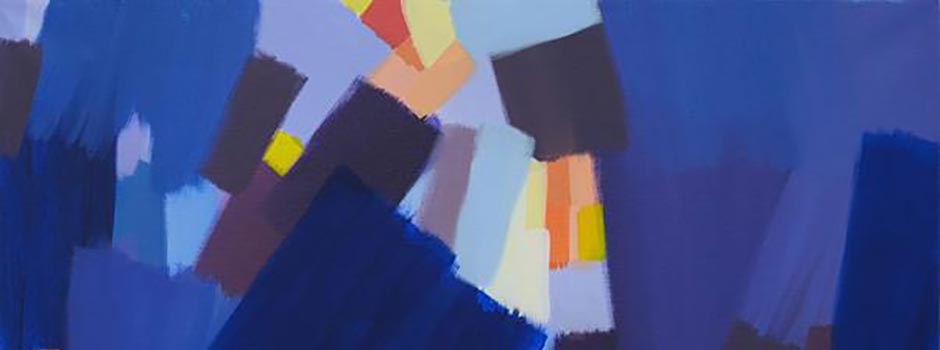
AYYAM GALLERY BEIRUT (OCT 30 - NOV 30, 2018) Opacity and Transparency, A Solo Exhibition of New York-based Artist Samia Halaby
Oct 26, 2018 Exhibition

Following a 2017 solo-exhibition at Ayyam Gallery Dubai, Halaby has since then added additional works to her series Illuminated Space, highlighting the artist’s latest experiments in the interplay of opacity and transparency within Illuminated Space.
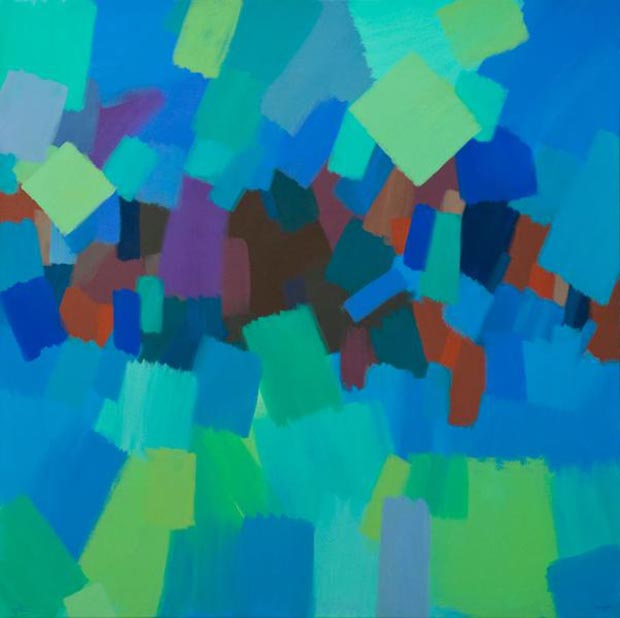 Samia Halaby, Green, 2015, acrylic on linen canvas, 178 X 178 cm / Courtesy of the Ayyam Gallery Beirut
Samia Halaby, Green, 2015, acrylic on linen canvas, 178 X 178 cm / Courtesy of the Ayyam Gallery Beirut
The initial works of the series focus on luminosity accomplished through the relationship of colours. The suggestion of radiating light within her works developed into an exploration of what she describes as ‘the space of light.’ For Halaby, luminosity in her paintings is learnt from seeing ambiences such as the darkness of night, or evening light in a city, and contract of interior and exterior light.
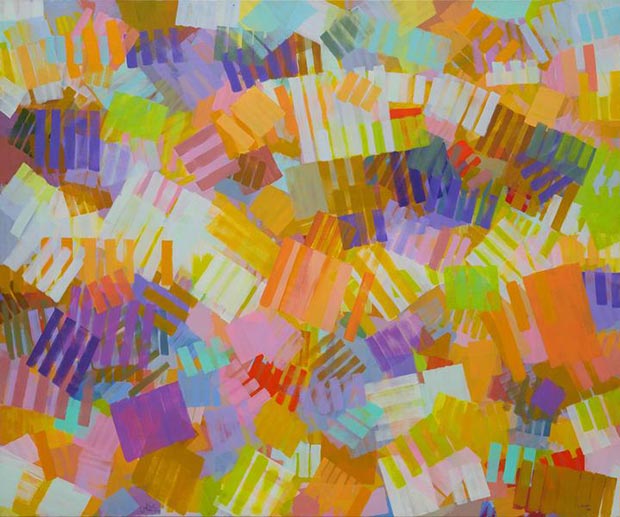 Samia Halaby, Interpenetrating Transparencies, 2017, acrylic on canvas, 153 x 183 cm/ Courtesy of the Ayyam Gallery Beirut
Samia Halaby, Interpenetrating Transparencies, 2017, acrylic on canvas, 153 x 183 cm/ Courtesy of the Ayyam Gallery Beirut
The series build upon past experiences of seeing the world. New York City and the daily activity of her neighbourhood are where the artist encounters human organization and interprets it using geometric forms. Nature’s complex forms, their surprising combinations also impact her canvas. Motion is a coherent part of her interpretations as she walks down the streets noting the expansion of things as she approaches them and their contraction as she walks away.
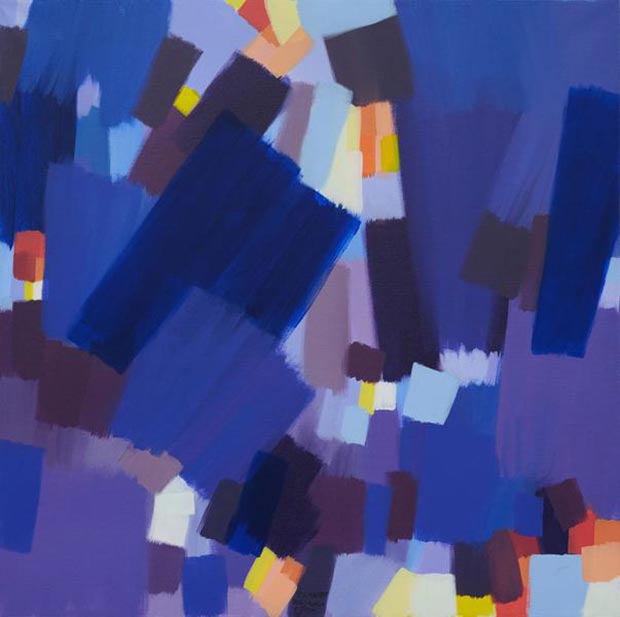 Samia Halaby, Petra, 2016, acrylic on canvas, 91.5 x 91.5 cm/ Courtesy of the Ayyam Gallery Beirut
Samia Halaby, Petra, 2016, acrylic on canvas, 91.5 x 91.5 cm/ Courtesy of the Ayyam Gallery Beirut
Halaby’s latest additions to the series depict a denser, more layered organization. Here she explores how transparency affects the hard edges of shape and how layers can be used to illustrate degrees of density and softness. For this, Halaby adopted a method new to her practice called ‘dry brush’. With works such as Interpenetrating Transparencies, Halaby renders her square and triangular brush marks as a series of overlapping transparent layers to allow the canvases to become more textured and softer.
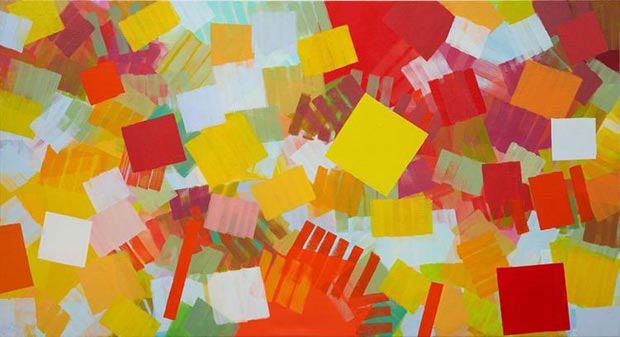 Samia Halaby, Red Flirting with Yellow, 2018, acrylic on canvas, 95 x 178 cm/ Courtesy of the Ayyam Gallery Beirut
Samia Halaby, Red Flirting with Yellow, 2018, acrylic on canvas, 95 x 178 cm/ Courtesy of the Ayyam Gallery Beirut
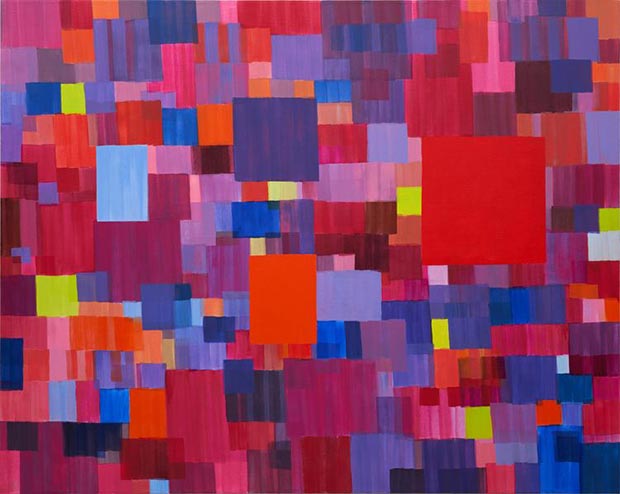 Samia Halaby, The Red One, 2018, acrylic on canvas, 122 x 153 cm/ Courtesy of the Ayyam Gallery Beirut
Samia Halaby, The Red One, 2018, acrylic on canvas, 122 x 153 cm/ Courtesy of the Ayyam Gallery Beirut
Born in Jerusalem in 1936, Samia Halaby is a leading abstract painter and an influential scholar of Palestinian art. Although based in the United States since 1951, Halaby is recognised as a pioneer of contemporary abstraction in the Arab world.
Halaby began her career in the early 1960s, shortly after graduating from Indiana University with a Master of Fine Arts degree in Painting. While teaching at the Kansas City Art Institute in 1964, she travelled to the Eastern Mediterranean as part of a faculty research grant and studied the geometric abstraction of the region’s Islamic architecture, which has continuously factored into her work. During this time, Halaby launched into a series of experiments that would initiate a career-long investigation of the materialist principles of abstraction: how reality can be represented through abstract form.
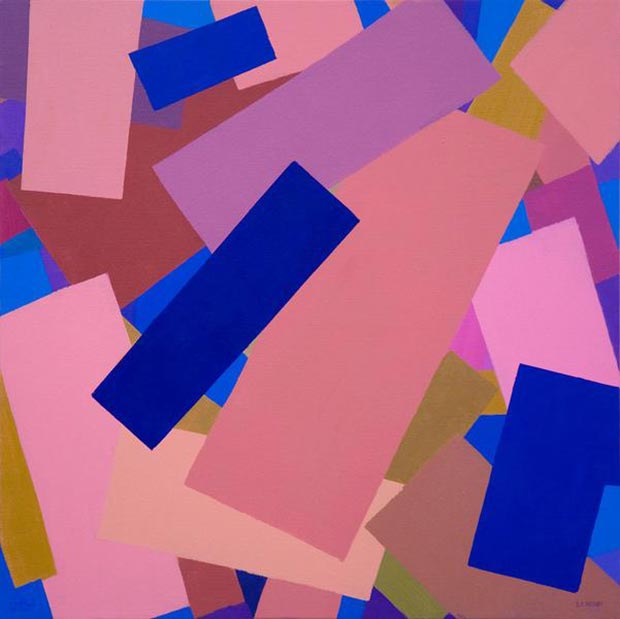 Samia Halaby, Brick City at Night, 2015, acrylic on canvas, 92 x 92 cm/ Courtesy of the Ayyam Gallery Beirut
Samia Halaby, Brick City at Night, 2015, acrylic on canvas, 92 x 92 cm/ Courtesy of the Ayyam Gallery Beirut
Halaby has been collected by international institutions since the 1970s, including the Solomon R. Guggenheim Museum of Art (New York and Abu Dhabi); Yale University Art Gallery; National Gallery of Art, Washington D.C.; Art Institute of Chicago; Cleveland Museum of Art; and Institut du Monde Arabe. Selected solo shows for the artist include Ayyam Gallery Al Quoz, Dubai (2017, 2014); Beirut Exhibition Center (2015); Ayyam Gallery London (2015, 2013); Ayyam Gallery DIFC, Dubai (2011); and Ayyam Gallery Beirut (2010). She has participated in recent group shows at Darat Al Funun, Amman (2015); the National Academy of Arts, New York (2015); The Guggenheim Museum, Abu Dhabi (2014); Broadway 1602, New York (2014); and Institut du Monde Arabe, Paris (2009).
Comments
Add a comment